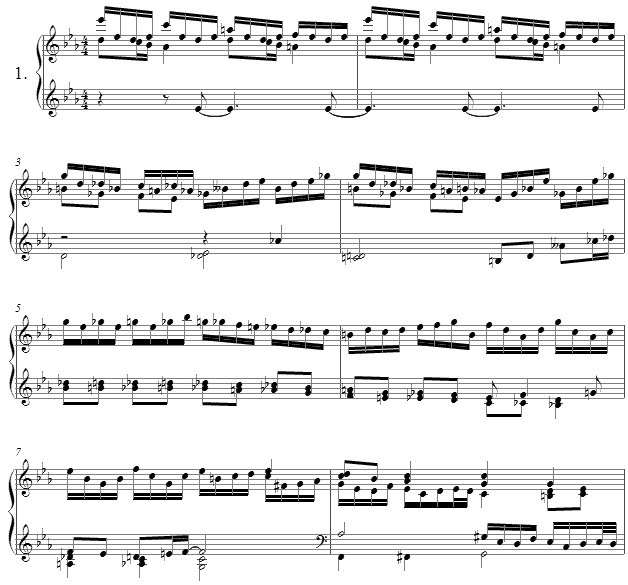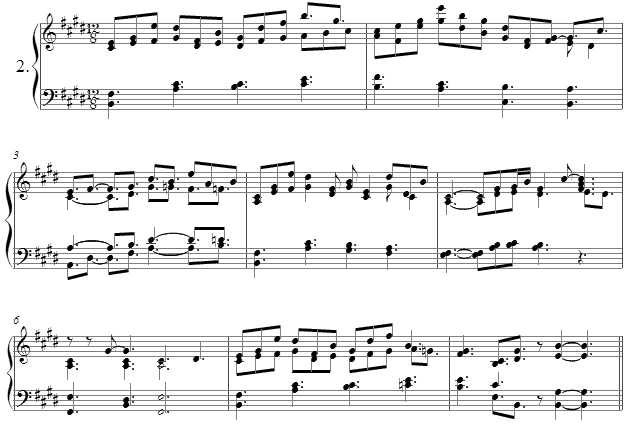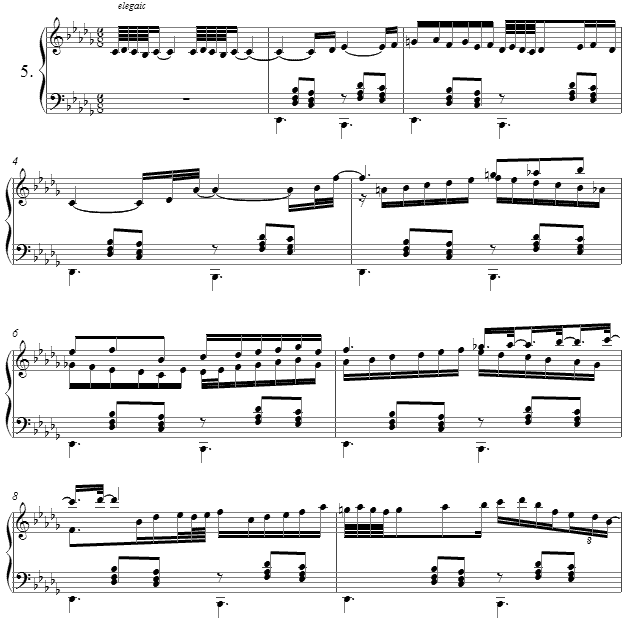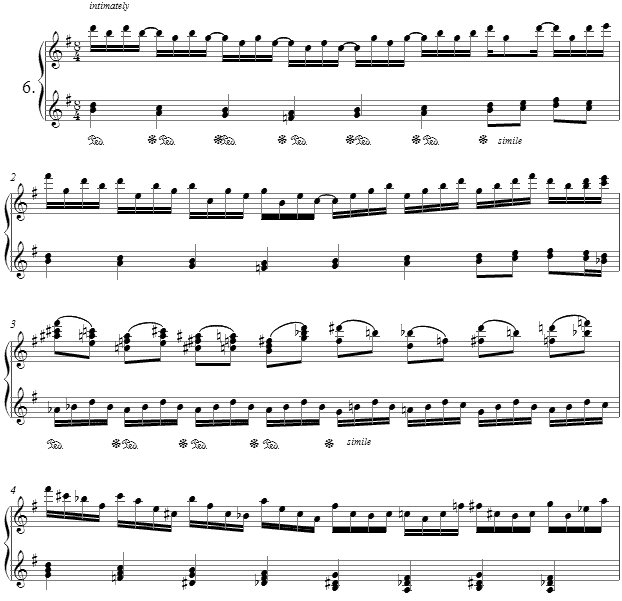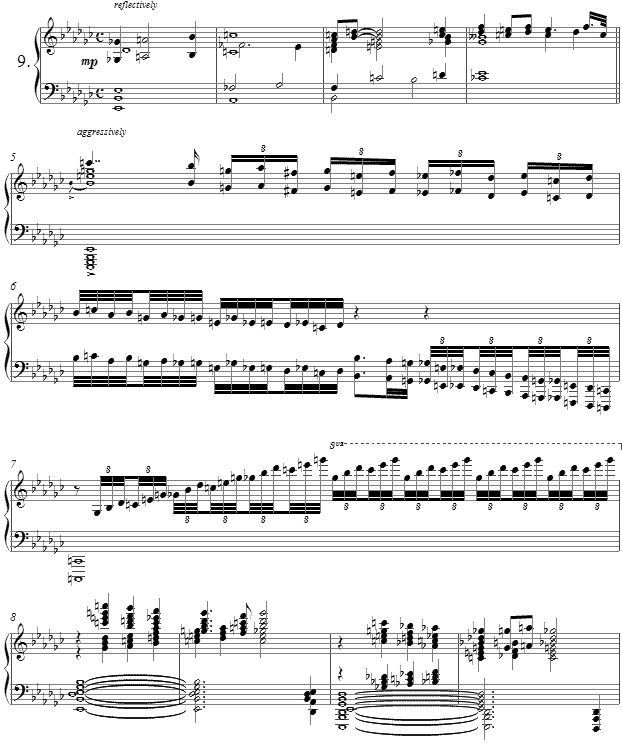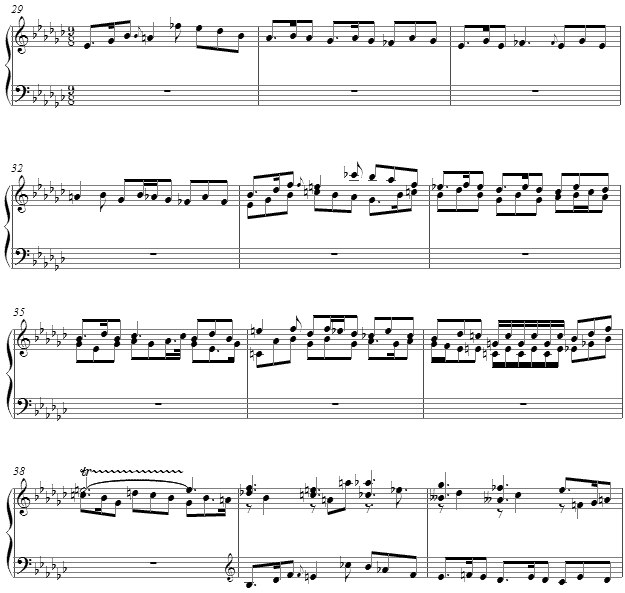Music and Texts of GARY BACHLUND
Vocal Music | Piano | Organ | Chamber Music | Orchestral | Articles and Commentary | Poems and Stories | Miscellany | FAQs
Nine Little Preludes and Fugues - (1995)
for piano
for various members of the musical staff and management, Metropolitan Opera
These Nine Little Preludes and Fugues are a look back at the high art of J. S. Bach, for Claude Debussy said that “après tout, Bach has said all there is to say in music. The rest of us only say it in different forms.” One notes that such composers as Charles Ives also quoted Debussy, as one may see in his song setting, "Granchester." (114 Songs, Redding, CT, 1922) So with these themes, which draw gestural elements out of Debussy's score for Pelleas et Melisande.
With Debussy's wise assertion in mind, these Nine Little Preludes and Fugues pose the stylistic question of spanning the performances styles and practices of both Bach and Debussy. As such, pedal choices, sostenuto, blurring of colors and phrases are suggested to the performer which might bridge and meld the colors of Bach’s formalities and Debussy’s gestural intentions. With this, I respectfully ask that the performer’s interpretive skills and depths be applied to theses pieces as he or she sees fit and finds best to illustrate Debussy’s above cited quote.
i. Prelude and Fugue in C minor [ 5 pages, circa 4' 00" ]
ii. Prelude and Fugue in E major [ 3 pages, circa 3' 00" ]
iii. Prelude and Fugue in C major [ 5 pages, circa 3' 00" ]
iv. Prelude and Fugue in D major [ 4 pages, circa 3' 00" ]
v. Prelude and Fugue in B-flat minor [ 6 pages, circa 4' 00" ]
vi. Prelude and Fugue in G major [ 6 pages, circa 4' 30" ]
vii. Prelude and Fugue in F Phrygian [ 3 pages, circa 3' 30" ]
viii. Prelude and Fugue in D Aeolian [ 4 pages, circa 5' 00" ]
ix. Prelude and Fugue in E-flat minor [ 7 pages, circa 4' 30" ][Total - 43 pages, circa 34' 30" ]
These preludes and fugues for piano were written in New York City, as I was laboring to prepare Debussy's Pelleas et Melisande, all the while ineptly confronting two conflicting career choices which I was considering at the time. Career paths lay ahead which would diverge, a common human dilemma as has Frost's poem so eloquently expressed. In time I chose the "one less traveled," which has made all the happy and productive difference.
The motives for these preludes and fugues are drawn from small, less obvious features within Debussy's score. Not having documented them at the time, I choose herein not to further clarify them.
The Prelude and Fugue in C minor totters between related harmonic domains, and the chromatic extension further diminishes the solid feeling of the tonic, all the while leading quite firmly back to it.
The fugue subject does not fully identify C minor as a region, as the motive is a snippet drawn from Debussy's orchestral score, rather than being composed to function originally as a fugue subject. Thus, by the first answer, the domain of F major as subdominant, is exposed, as it was in the opening of the prelude's first measure.
The Prelude and Fugue in E major mimics Debussy's keyboard style and texture, and it is recommended to be played with that same "blur" of harmonic regions which is characteristically seen in the piano preludes of Debussy.
The fugue subject is in fact a short, two-voiced motive which is carried throughout its appearances in the structure of the fugue. I am unsure whether a two-voiced subject was ever the motive for a fugue, but that was no reason not to employ it as such herein.
The Prelude and Fugue in B Flat minor begins with an elegiac opening gesture on the second degree of the scale, which is then accompanied with a falling chordal gesture as the melodic material is developed, rising higher in pitch until the fugue on which it is based begins.
The Prelude and Fugue in G major begins devotedly in the tonic major but employs the lower seventh to harmonize the downward sweep of the theme before showing the major seventh in the upward flow of the theme. A shower of non-harmonic chords answers the opening theme until the modal variant of G with its minor chords hints at a return at measure eight, harmonize with triads, sometimes in whole tone parallelism, pointing towards a final restatement in G major washing away the many chromatic elements and regions visited.
The last of these preludes and fugues is in E flat minor, a rhapsody of virtuoso proportion. The interpreter is encouraged towards rubati, over stated dynamic ranges, and generally an emotional performance.
The rhythmic fugue subject hints immediately at other tonal regions other than the tonic, with its raised fourth and lowered second. A development of the subject ensues, with a final dramatic coda, a quasi improviso.
The score is available as a free PDF download, though any major commercial performance or recording of the work is prohibited without prior arrangement with the composer. Click on the graphic below for this piano score.
Nine Little Preludes and Fugues
